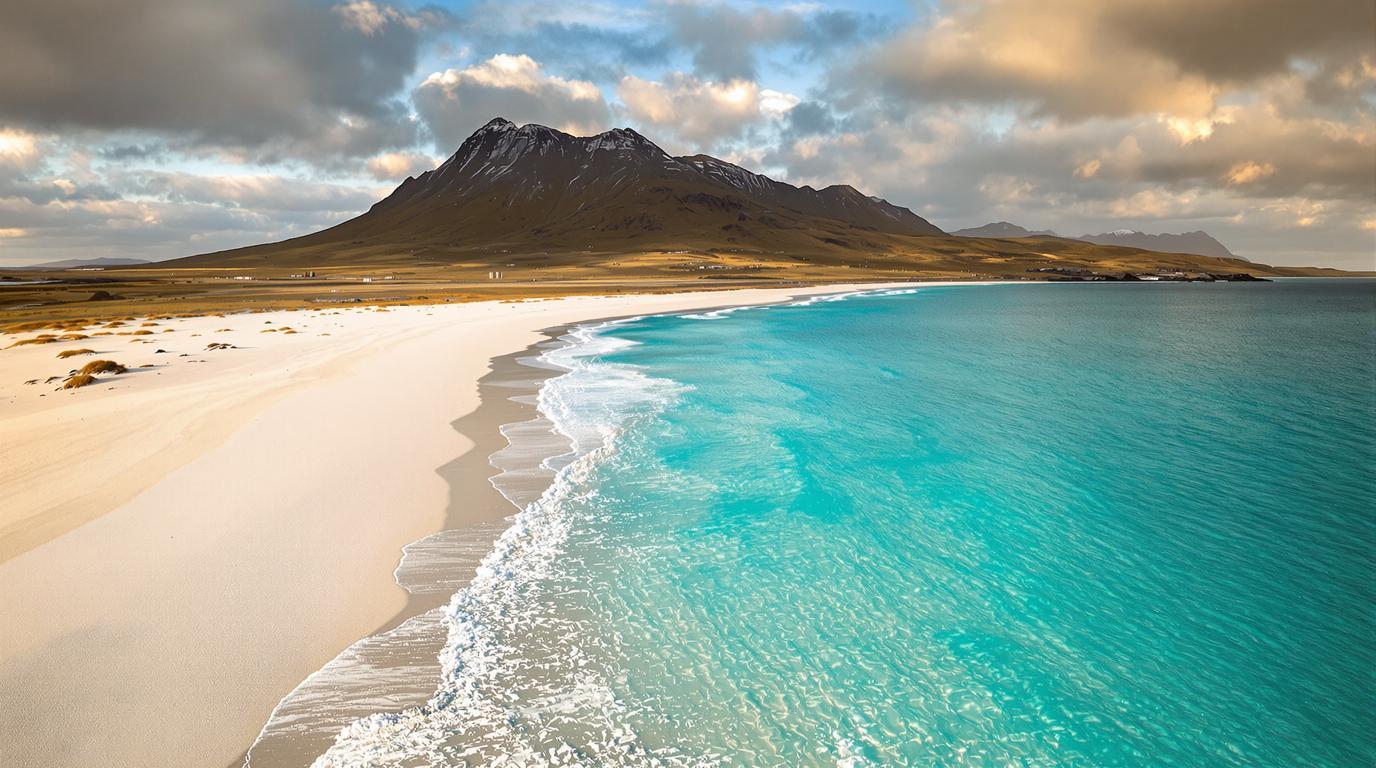Escape to the mythical Outer Hebrides: Scotland’s untouched paradise of pristine beaches and ancient traditions
Where ocean meets eternity: The Hebridean beach experience
At the northwestern edge of Europe, where Atlantic waves crash against ancient shores, lies a string of islands that seem plucked from another time. The Outer Hebrides – Scotland’s remote archipelago – harbors some of Europe’s most spectacular beaches, often completely deserted even during summer months.
Luskentyre Beach on the Isle of Harris consistently ranks among the world’s top coastal destinations, with powdery white shell-sand that contrasts dramatically with turquoise waters. Unlike some Scottish islands that enjoy surprising sunshine, the Hebrides offer a wilder, more elemental experience.
A tapestry of sound and language
The Outer Hebrides represent the heartland of Scottish Gaelic culture, where approximately 60% of residents still speak this ancient Celtic language. Far from a museum piece, Gaelic thrives in everyday conversation, road signs, and the soulful music that fills local pubs each evening.
“Our language carries our stories, our songs, and our connection to this land going back thousands of years,” explains Màiri MacLeod, a local storyteller from Lewis. “When you hear Gaelic spoken here, you’re hearing the voice of these islands.”
The fabric of island life: Harris Tweed
Unlike other remote islands that showcase ancient forests, the Hebrides’ treeless landscape gave rise to a different tradition: Harris Tweed. This world-famous fabric is the only textile protected by its own Act of Parliament, ensuring it’s handwoven exclusively in islanders’ homes using traditional methods.
At the Harris Tweed Authority in Stornoway, visitors can witness the entire process from raw wool to finished cloth. The distinctive earthy colors – russets, mossy greens, and heathery purples – directly reflect the Hebridean landscape that inspires them.
Sacred stones of the ancients
The mysterious Callanish Standing Stones on Lewis predate Stonehenge, standing sentinel for over 5,000 years. This megalithic monument, arranged in a cross-shaped pattern with a central circle, aligns with celestial events and offers a profound connection to Neolithic peoples who once called these islands home.
“Stand here at midsummer sunset, and you’ll understand why our ancestors chose this spot,” says archaeologist Duncan MacInnes. “The stones frame the setting sun perfectly – it’s a calendar, a temple, and perhaps something we still don’t fully comprehend.”
Coastal wilderness and wildlife encounters
While traditional boats offer unique perspectives in Mediterranean waters, the Hebrides provide wildlife-watching opportunities from dramatic coastal paths. Golden eagles soar above North Harris mountains, while coastal walks reveal seals, otters, and occasional orcas hunting offshore.
Berneray’s West Beach stretches for three uninterrupted miles, often with only oystercatchers and plovers for company. Unlike high-altitude mountain retreats, these sea-level sanctuaries offer accessible wilderness.
Island-hopping across time
Each island in the chain possesses distinct character. Lewis features peat bogs and prehistoric sites. Harris offers mountains and beaches. The Uists and Barra provide Gaelic strongholds where traditional crofting (small-scale farming) persists alongside some of Scotland’s richest birdlife.
Unlike floating above lavender fields, Hebridean adventures keep you firmly grounded in authenticity. These islands reveal themselves slowly to those willing to embrace their rhythms and weather patterns.
When stars reclaim the night
With minimal light pollution, the Outer Hebrides offer spectacular dark skies. Winter brings possibilities of witnessing the Northern Lights dancing across Hebridean horizons, while summer’s “gloaming” – the prolonged twilight of northern latitudes – bathes the landscape in a photographer’s dream light for hours.
The Outer Hebrides represent Scotland at its most authentic – where time moves differently, traditions remain vital, and landscapes retain their raw, elemental power. Here, on the edge of Europe, you’ll discover a world both ancient and immediate, where every beach walk becomes a journey through geological time and every conversation preserves a culture that refuses to fade into history.
